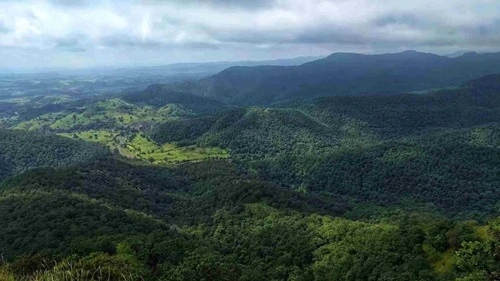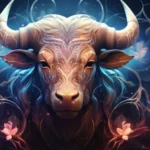Chikhaldara, a lesser-known gem in Maharashtra, is the state’s only coffee-growing hill station. Located in the Satpura Range at an altitude of around 1,188 meters, Chikhaldara is known for its lush greenery, cool climate, waterfalls, and rich wildlife. The town is steeped in mythological significance, named after Keechaka, a character from the Mahabharata, and is believed to be the spot where Bhima killed Keechaka. Today, Chikhaldara attracts nature lovers, trekkers, and wildlife enthusiasts seeking a serene escape from city life.
Choosing the best time to visit Chikhaldara allows travelers to experience the hill station’s attractions comfortably, enjoy its beautiful landscapes, and explore the surrounding wildlife sanctuary. Here’s a guide on the ideal times to plan your trip to Chikhaldara and what each season has to offer.

Best Seasons to Visit Chikhaldara
1. Monsoon (June to September)
Monsoon is widely considered the best season to visit Chikhaldara, as the rains transform the entire landscape into a lush green paradise. With temperatures ranging from 20°C to 28°C, the monsoon season brings moderate to heavy rainfall, revitalizing the hills, forests, and valleys. The waterfalls are in full flow, and the air is filled with the fresh scent of rain-soaked earth, making this season ideal for nature lovers and photographers.
During monsoon, Chikhaldara’s viewpoints, such as Sunset Point and Panchbol Point, offer mesmerizing views of mist-covered hills, and the waterfalls, like Bhimkund, are at their most majestic. The cloudy atmosphere and frequent rains create a mystical vibe that’s perfect for those who enjoy the beauty of the rain.
Though trekking trails and paths may become slippery, the monsoon season offers a chance to witness Chikhaldara in its most vibrant and verdant form. It’s also a quieter season, with fewer tourists, allowing for a peaceful experience. Carrying rain gear and waterproof footwear is recommended to navigate the wet terrain comfortably.
2. Winter (October to February)
Winter is another excellent time to visit Chikhaldara, as the weather is cool and pleasant, with temperatures ranging between 10°C and 20°C. This comfortable climate makes it ideal for exploring the hill station’s attractions, trekking trails, and nearby wildlife sanctuaries without the worry of heat or heavy rain.
The winter months are perfect for visiting Melghat Tiger Reserve, located close to Chikhaldara. This season is ideal for wildlife sightings, as animals often come out to bask in the winter sun. Early morning and late afternoon safaris in the reserve increase the chances of spotting tigers, leopards, and other species. The reserve is also a haven for birdwatchers, with a variety of migratory and resident birds flocking to the region in winter.
For those interested in exploring historical sites, winter offers pleasant weather to trek up to Gavilgad Fort, an ancient fort with impressive stone carvings and scenic views of the surrounding forest. Winter sunsets are especially beautiful in Chikhaldara, and Sunset Point offers breathtaking panoramic views of the sun dipping behind the hills.
The cooler climate also enhances the experience of coffee plantation visits and long walks through the forested trails. If you’re visiting during winter, early mornings can be chilly, so it’s advisable to carry a light jacket or shawl.
3. Summer (March to May)
Summer in Chikhaldara can be warmer than other seasons, with temperatures ranging from 25°C to 35°C, but it’s relatively cooler than the plains of Maharashtra. While the days can get warm, mornings and evenings are still pleasant, making it possible to explore outdoor attractions in these cooler hours.
Despite the heat, summer has its own advantages for travelers who prefer fewer crowds and quiet exploration. Early mornings and late afternoons are ideal times for visiting attractions like Panchbol Point, Bhimkund, and the coffee plantations, where the summer light enhances the scenic beauty of the green landscapes. Gavilgad Fort, with its shaded paths and panoramic views, also makes for a worthwhile visit in the early hours.
Summer is also a great time for stargazing, as the clear skies provide excellent visibility for observing the stars over the Satpura Range. Although the wildlife activity at Melghat Tiger Reserve may be less dynamic in the heat, visitors can still enjoy birdwatching and spotting smaller mammals. Additionally, hotels and guesthouses often offer lower rates during summer, making it a budget-friendly time to visit.
Key Attractions and Activities in Chikhaldara
- Bhimkund Waterfall: Bhimkund is a beautiful waterfall that cascades down a rocky cliff and is a popular picnic spot. During the monsoon season, the waterfall is at its fullest, creating a mesmerizing spectacle.
- Melghat Tiger Reserve: Located near Chikhaldara, Melghat Tiger Reserve is a sanctuary for a variety of wildlife, including tigers, leopards, and sloth bears. Winter is the best season for safaris, with increased chances of wildlife sightings and birdwatching.
- Gavilgad Fort: This ancient fort offers panoramic views of the surrounding hills and is known for its historical significance and stone carvings. A trek to the fort during winter provides a mix of adventure and history.
- Sunset Point and Panchbol Point: Sunset Point offers stunning views of the sun setting over the Satpura hills, while Panchbol Point provides panoramic views of five valleys. These spots are perfect for photography, especially in winter and early summer.
- Coffee Plantations: Chikhaldara is Maharashtra’s only coffee-growing region. Visitors can take guided tours of coffee plantations, learning about the cultivation process and sampling freshly brewed coffee.
- Devi Point and Mozari Point: These viewpoints offer scenic vistas of the surrounding valleys and hills, making them popular spots for picnics and quiet reflection. Visiting during the monsoon season provides spectacular views of mist-laden landscapes.
Practical Tips for Visiting Chikhaldara
- Best Time for Photography: Early mornings and late afternoons provide soft lighting, ideal for capturing the scenic beauty of Chikhaldara. Monsoon offers lush landscapes, while winter provides clear skies for photography.
- Clothing and Gear: Dress according to the season. Light, breathable clothing is suitable for summer, while rain gear and waterproof footwear are essential for monsoon. For winter, carry warm clothing, especially for early mornings and evenings.
- Local Transport: Chikhaldara is a small hill station, and local transport options like taxis and shared autos are available. For exploring the nearby reserve and forts, hiring a local guide or booking a tour is recommended.
- Wildlife Precautions: When visiting Melghat Tiger Reserve, follow all guidelines provided by the forest department. Avoid loud noises, stay within designated areas, and respect the natural habitat.
- Accommodation Options: Chikhaldara has several budget hotels, guesthouses, and eco-resorts. Booking in advance during peak seasons, such as winter, is recommended.
Conclusion
Chikhaldara offers a unique experience in Maharashtra, with its blend of scenic landscapes, rich wildlife, and cultural heritage. From the lush greenery of monsoon to the cool, clear days of winter and the quieter summer mornings, each season brings a different charm to this peaceful hill station. Whether you’re exploring the breathtaking viewpoints, savoring the serenity of Bhimkund waterfall, or setting out on a wildlife safari in Melghat, timing your visit to suit your preferences ensures an unforgettable experience in Chikhaldara. This tranquil retreat is a perfect escape for those seeking natural beauty and tranquility amidst Maharashtra’s hills.


